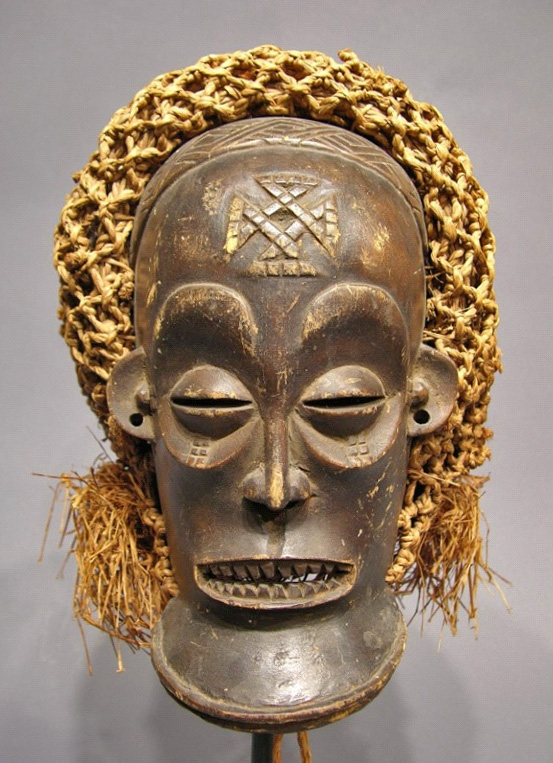
Angola/Democratic Republic of Congo
Wood, plant fiber
The Chihongo tribe is the most popular of the Chokwe group inhabiting Angola and the Congo. Their masks stand for prosperity and male power. Like all Chokwe masks, the Chihongo embodies the spirit of a deceased person. According to Chokwe belief, ancestral spirits play the crucial role of providing for living descendants. Many Chokwe groups emphasize the royal qualities of this Chihongo mask, which formerly was permitted to be used only in ritual dance ceremonies and kept only by a chief or his sons as they travel through their realm exacting tribute in exchange for the protections that the masks gave. While Chihongo brings prosperity, his female counterpart, Pwo, encourages fertility.
This mask is a Pwo mask. It is a classic Chokwe mask genre that honors founding female ancestors. Its creation celebrates descent through the tribe’s mothers’ lines. Pwo’s joint performance with her male counterpart, Chihongo, brings fertility and prosperity to the community.
Inscribed motifs on the mask’s forehead and often cheeks are classic graphic designs of ethnic identity. The central cruciform on the forehead has been interpreted as a cosmogram while motifs on each cheek are describe as a solar disc joined by tears. Chokwe masks are often performed at the celebration that mark the completion into adulthood. That occasion also marks the dissolution of the bonds of intimacy between mothers and their sons. The pride and sorrow that event represents for Chokwe women is alluded to by the tear motif.
For performances, the Chihongo mask was adorned with a headdress of plant fiber, like a crown worn by chiefs and kings. Appearing during important events, the mask was supplemented by a net costume with a white, hooped skirt made of thick layers of “makintu” grass.